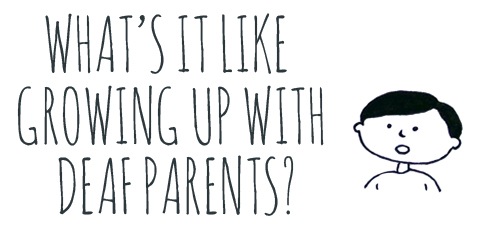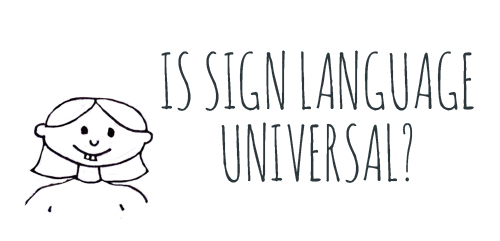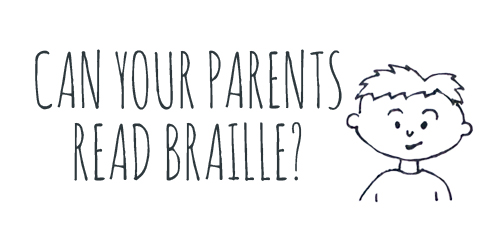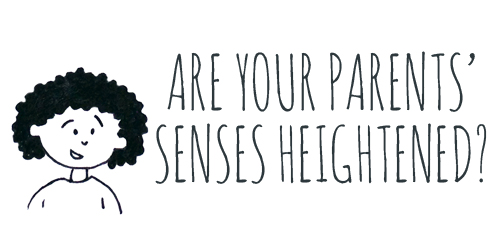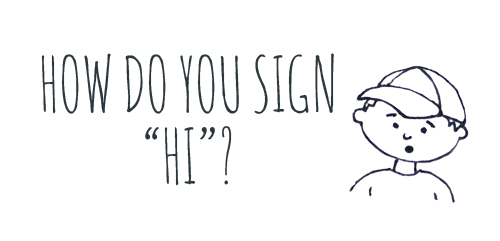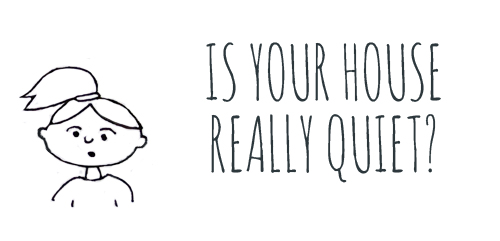From teachers and doctors to friends and family members; k/codas are often confronted with questions about deaf cultures and signed languages. Here is a list of the silly questions k/codas are frequently asked! For information on how to respond to these types of questions, see our list of 10 Koda Tidbits to Share with New Classmates!
Sure there are some cultural differences, but we don’t know anything else! It’s a lot like growing up with any parents – every family does things differently! In our households it is common to use sign language and communicate visually.
Check out our koda spotlight here with Frank Gallimore for his personal experience with this question!
Language acquisition is largely dependant on external stimulus. Basically, people tend to develop language abilities based on the language communities they live in. I’m bilingual/multilingual. My family is made up of people who are deaf and hearing. That means I was exposed to signed language and spoken languages in the same way that you were exposed to the languages your family uses.
YES- Deaf people can drive. Driving is a visual skill- research has shown that deaf people even have better vision than hearing people!
Sign language is not universal. Just like spoken language there is not one universal form. There are many signed languages. Many are named for their country of origin, like French Sign Language (LSF) or Mexican Sign Language (LSM). Just because two nations share a spoken language, that does not mean they share a signed language. For example, a user of British Sign Language (BSL) might not understand American Sign Language (ASL).
Some deaf people are deaf-blind and may read braille. My parents do/do not. Braille is primarily used for low vision or blind people. My parents are deaf!
The senses aren’t heightened they are just used differently and sometimes more efficiently. For example Deaf people’s eyesight doesn’t improve to 15/15 but there are studies out there that suggest that they utilize peripheral vision better.
There are a couple ways to sign hello. You can wave or you can flatten your palm, bring your hand up to your forehead (palm-side down) and move it out in front of you, similar to a salute. If you are addressing a large audience you can do either of these things multiple times with both hands. If you are really curious, you can learn more with the ASL app.
That’s a common myth and it can actually be quite the opposite! Deaf community members think about sound differently than hearing people do. In your home a slammed door might mean that someone is angry, or your parent vacuuming at 7am might be seen as rude. My family doesn’t interpret sound that way. Sometimes without realizing how loud things can be, my parents shut cabinet doors, move chairs, put away dishes, or vacuum. It’s not a big deal to me. Learn more about DeafSpaces here.
Modern technology allows deaf people to communicate in a multitude of ways. The video phone is one of the more commonly used devices which allows deaf people to call and communicate to each other through the tv (sort of like skype). If they would like to call a hearing person they call the Video Relay Service (VRS) which connects them with a sign language interpreter who interprets the call. For more information on how the deaf community has used technology to communicate, see our list of #Throwbacks of US Deaf Culture.
Some deaf people like the feel the music just as much as you like to listen to it. Everyone has their preferences but deaf people can enjoy music too! Deaf people have all different types of hearing levels- some can hear the music, and some just like to feel it.
Share some of the silly questions you or your family have recieved by emailing us at onekodaheart@gmail.com!
![[Image Description: In the image a thumb, outlined in black, signs “10” with accompanying text that reads: “KODAheart’s [10] Silly Questions K/Codas are Frequently Asked”. In the background are layered yellow, orange, green, blue and teal speech bubbles.]](http://kodaheart.com/wp-content/uploads/2016/01/k310Jan2016final-e1451879135912.jpg)
